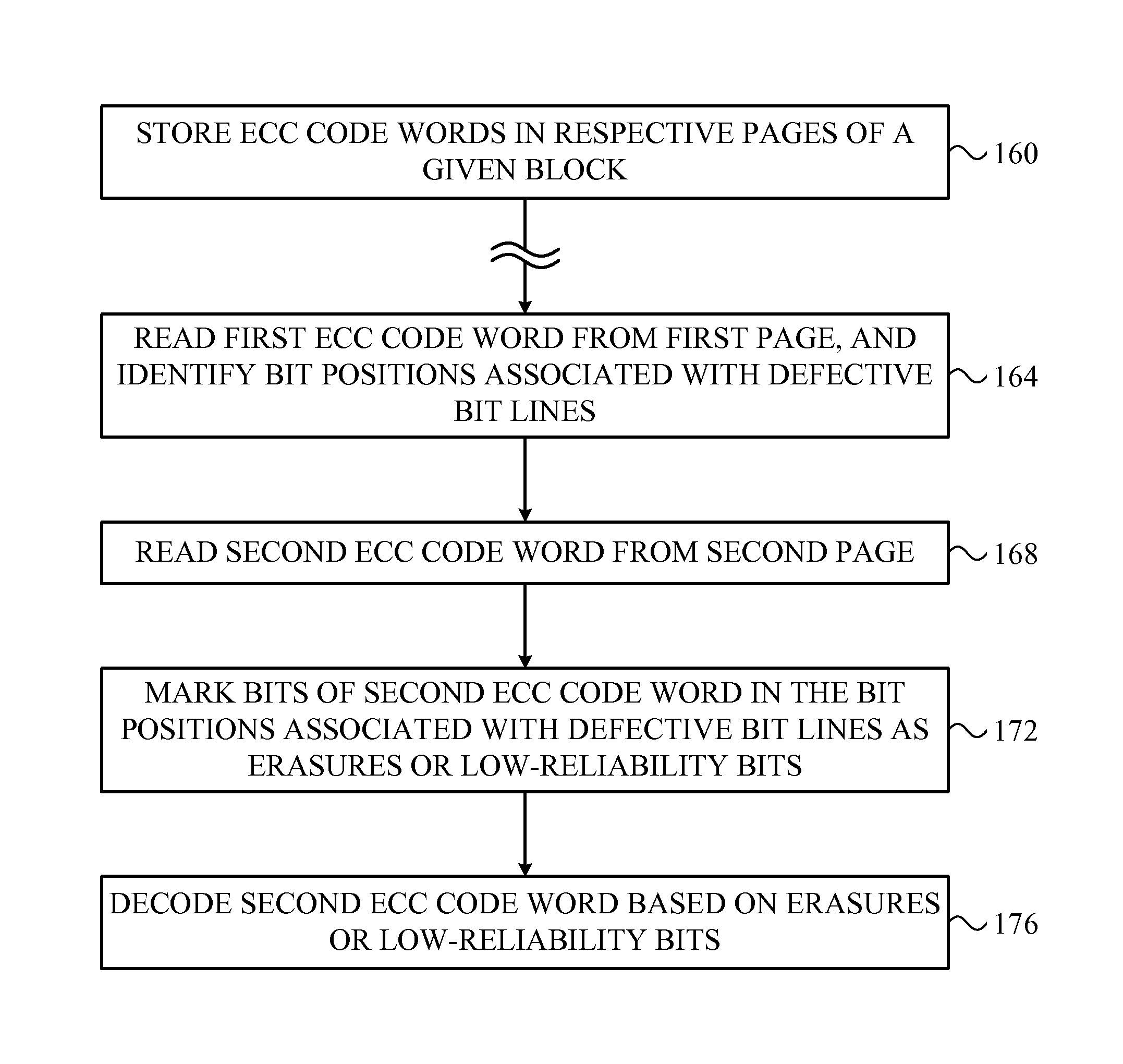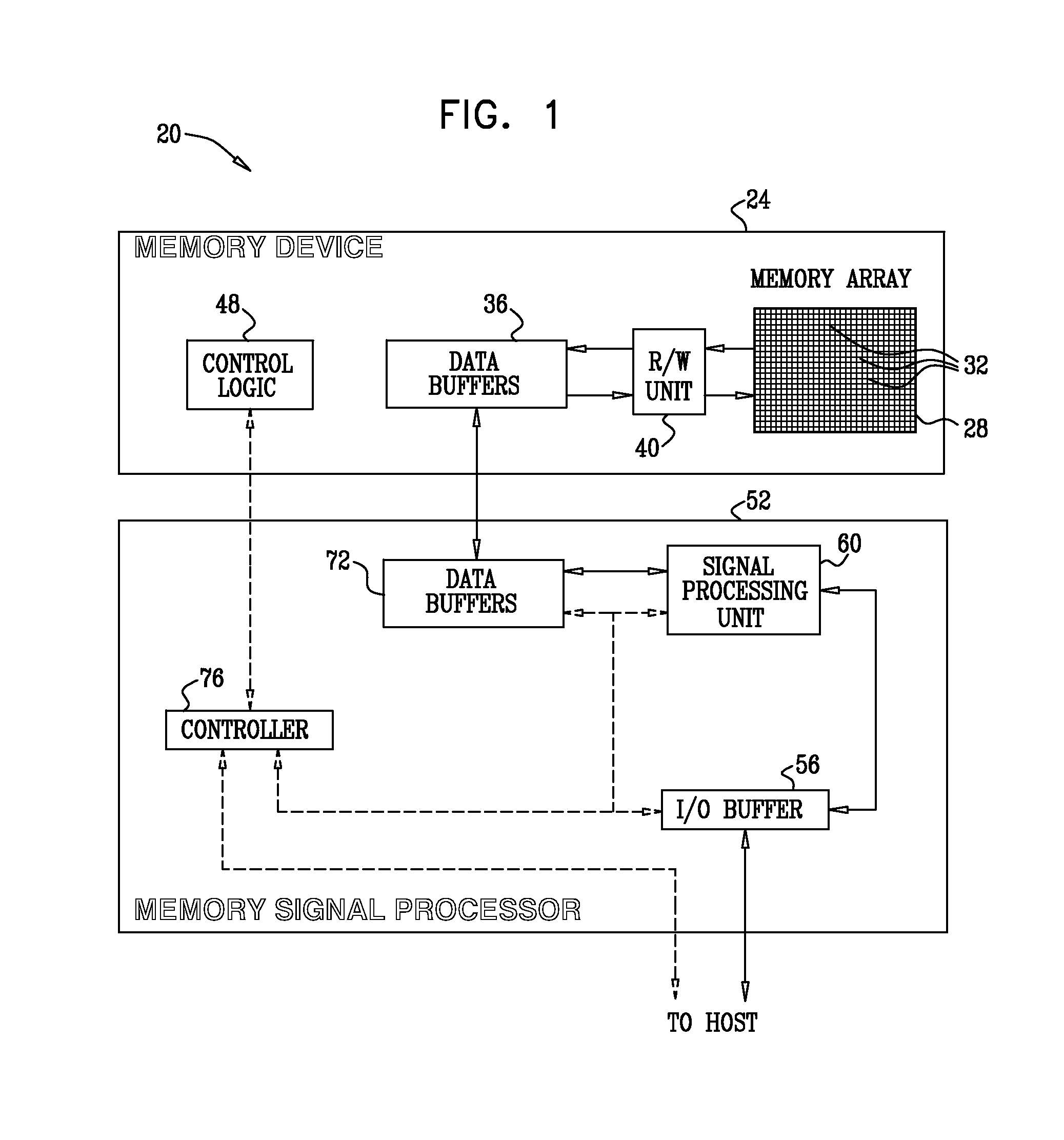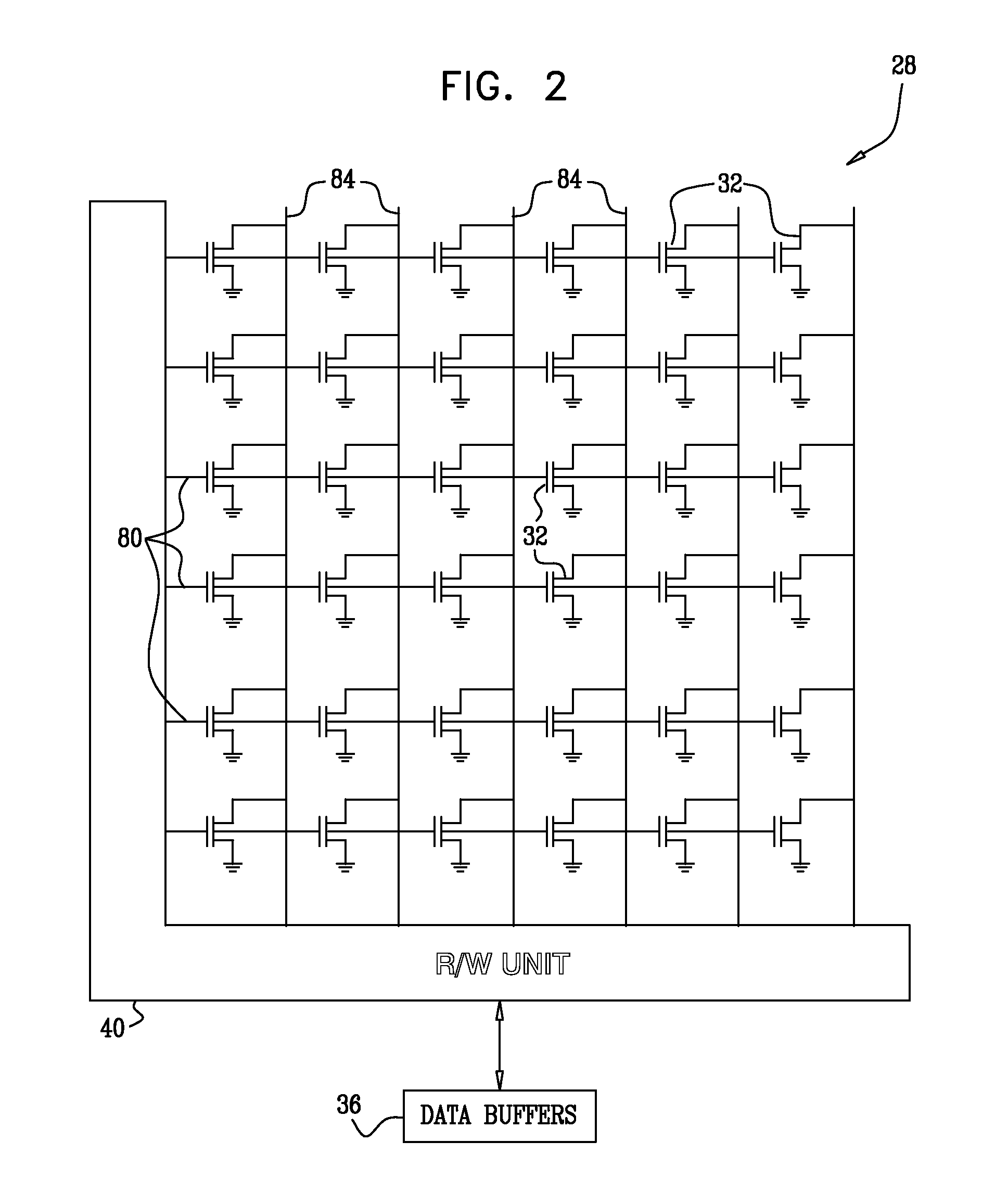Automatic defect management in memory devices
a memory device and defect management technology, applied in error correction/detection using convolutional codes, instruments, coding, etc., can solve problems such as new defects being detected during writing, memory cells in memory devices may be defective, and new defects being skipped
- Summary
- Abstract
- Description
- Claims
- Application Information
AI Technical Summary
Benefits of technology
Problems solved by technology
Method used
Image
Examples
Embodiment Construction
Overview
[0027]Embodiments of the present invention provide improved methods and systems for operating memory devices having defective memory cells. In the context of the present patent application and in the claims, the term “defective memory cell” is used to describe a memory cell whose stored analog value deviates considerably from the intended target value with high likelihood. Defective cells may comprise, for example, cells that fail to be programmed, i.e., remain stuck at the erased level despite programming attempts, cells that exhibit large programming errors with high likelihood, cells that exhibit large aging errors, and / or cells that fail to store or retain their target values within tolerable bounds for any other reason.
[0028]A typical memory device comprises multiple memory cells arranged in blocks. In any given block, the memory cells along each row are connected to a respective word line, and the memory cells along each column are connected to a respective bit line. I...
PUM
 Login to View More
Login to View More Abstract
Description
Claims
Application Information
 Login to View More
Login to View More - R&D
- Intellectual Property
- Life Sciences
- Materials
- Tech Scout
- Unparalleled Data Quality
- Higher Quality Content
- 60% Fewer Hallucinations
Browse by: Latest US Patents, China's latest patents, Technical Efficacy Thesaurus, Application Domain, Technology Topic, Popular Technical Reports.
© 2025 PatSnap. All rights reserved.Legal|Privacy policy|Modern Slavery Act Transparency Statement|Sitemap|About US| Contact US: help@patsnap.com



